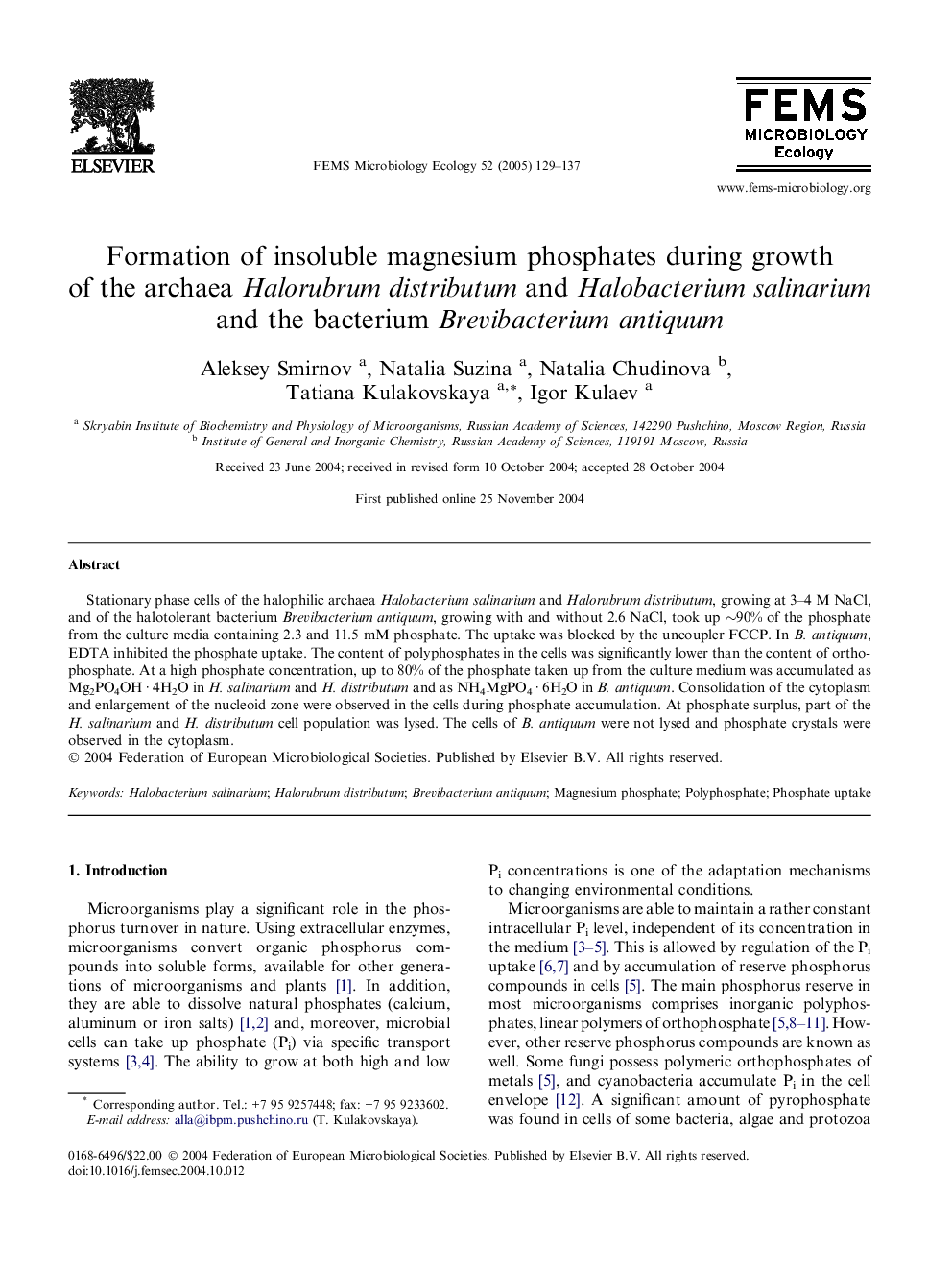| Article ID | Journal | Published Year | Pages | File Type |
|---|---|---|---|---|
| 9437760 | FEMS Microbiology Ecology | 2005 | 9 Pages |
Abstract
Stationary phase cells of the halophilic archaea Halobacterium salinarium and Halorubrum distributum, growing at 3-4 M NaCl, and of the halotolerant bacterium Brevibacterium antiquum, growing with and without 2.6 NaCl, took up â¼90% of the phosphate from the culture media containing 2.3 and 11.5 mM phosphate. The uptake was blocked by the uncoupler FCCP. In B. antiquum, EDTA inhibited the phosphate uptake. The content of polyphosphates in the cells was significantly lower than the content of orthophosphate. At a high phosphate concentration, up to 80% of the phosphate taken up from the culture medium was accumulated as Mg2PO4OH · 4H2O in H. salinarium and H. distributum and as NH4MgPO4 · 6H2O in B. antiquum. Consolidation of the cytoplasm and enlargement of the nucleoid zone were observed in the cells during phosphate accumulation. At phosphate surplus, part of the H. salinarium and H. distributum cell population was lysed. The cells of B. antiquum were not lysed and phosphate crystals were observed in the cytoplasm.
Related Topics
Life Sciences
Environmental Science
Ecology
Authors
Aleksey Smirnov, Natalia Suzina, Natalia Chudinova, Tatiana Kulakovskaya, Igor Kulaev,
